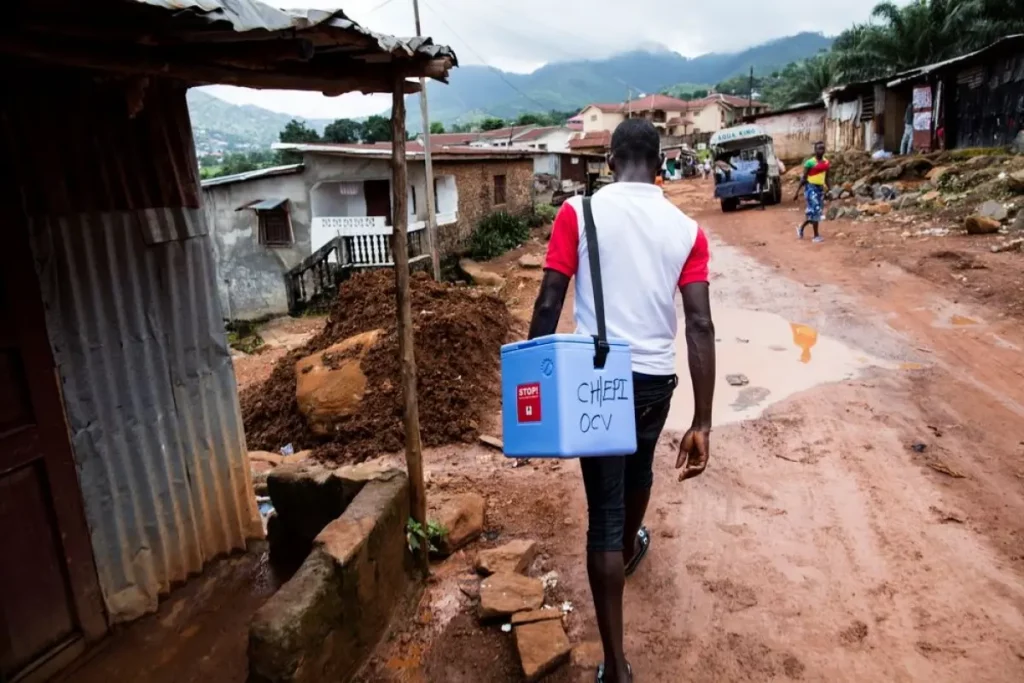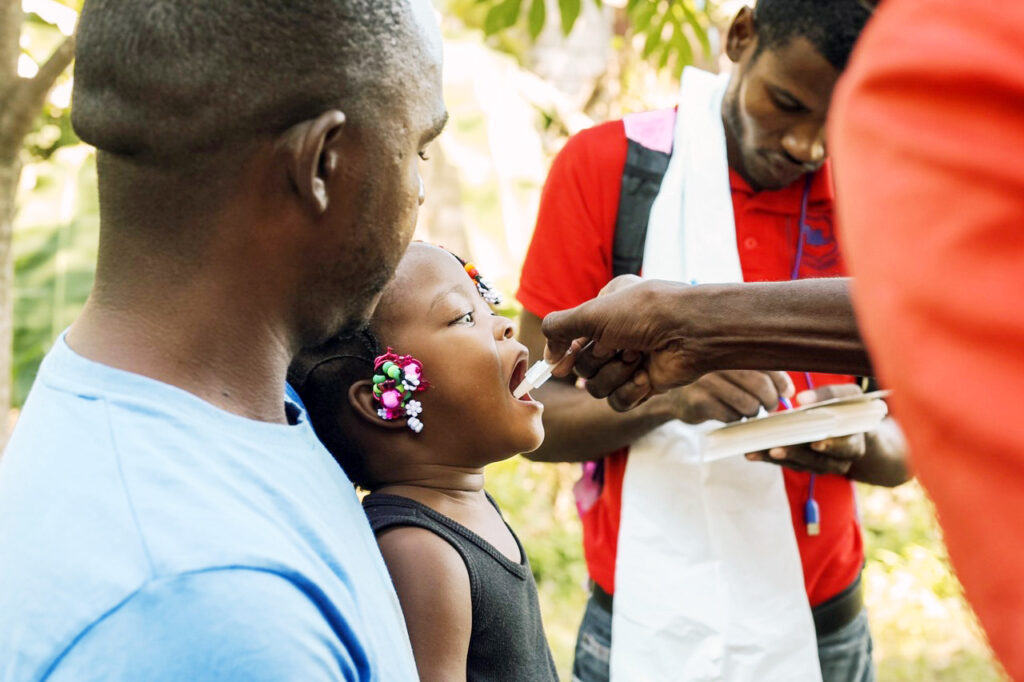Need to Know: Cold Chain and COVID-19

Boosting capacity to store, deliver temperature-sensitive tests, drugs, and vaccines
Posted on Dec 23, 2021

Debates about sharing vaccine patents continue to grab headlines, but the race to supply and administer COVID-19 vaccines around the world, particularly to the most marginalized and remote communities, is about far more than intellectual property rights.
Patent waivers don’t mean anything, for example, if you can’t then get the vaccines to the places where they’re needed most, while maintaining the frigid temperatures required during transport, storage, and distribution to keep the lifesaving vaccines viable.
That’s where the term “cold chain” comes in. Simply put, a cold chain is a supply chain that requires refrigeration or freezing. While it’s most commonly associated with perishable food items for grocery stores and restaurants, strong cold chain infrastructure is also vital for public health.
As part of its global response to the COVID-19 pandemic, Partners In Health (PIH) has been working for more than a year to bolster cold chain capacity at PIH-supported facilities. That capacity is crucial for preserving and delivering temperature-sensitive diagnostics, medications, and vaccines for patients.
Since the beginning of the pandemic, PIH has purchased and delivered cold chain-related items including refrigerators, freezers, transport coolers, and temperature monitoring equipment to reinforce cold chain infrastructure and vaccine delivery systems in seven countries.
We spoke with Seyfu Abebe, PIH’s supply chain manager, who shared insights about the cold chain process.
How do items get from Point A to Point B?
There are two phases: international shipment and in-country distribution. All items are stored with vendors and then shipped via airplane. Special boxes are used to ensure that items are kept at proper temperatures until they reach their final destination—which usually takes two to four days.
When the boxes arrive at the airport, people on the ground do a customs clearance check as quickly as possible before transferring the boxes into a cold room or refrigerator at a warehouse.
Recently, PIH began using data loggers, which are electronic devices that record the temperature throughout the entire supply chain process to make sure items remain cold “from the manufacturer to the last mile,” says Abebe.
Before the boxes leave the warehouse, staff read the data logger reports transported within the special boxes to ensure the appropriate temperature range was maintained during transit.
Next, it’s time for in-country distribution. The boxes are delivered by truck, motorbike, boat or any available means of transportation to PIH-supported health care facilities.
How cold does storage have to be?
Like many vaccine-related questions, “How cold do they have to be?” has seen changing answers over the past year. Initially, doses of Pfizer’s vaccine required storage at -94 degrees Fahrenheit, colder than winter in Antarctica, as NPR reported in November 2020. Moderna’s vaccine, which also relies on delicate molecules known as messenger RNA, or mRNA, required storage at -4 degrees Fahrenheit, about the temperature of a residential freezer.
This spring, however, both Moderna and Pfizer reported data showing their vaccines can be stored for at least a month at normal refrigeration temperatures, about 36 to 46 degrees Fahrenheit—the same temperature needed for the AstraZeneca and Johnson & Johnson vaccines.
Knowing how long vaccines can remain viable at given temperatures is crucial when thinking about logistics such as lengthy shipping, complicated distribution in remote areas, and potential loss of unused vaccines because of expiration dates.
Those factors can also determine vaccine packaging, whether it’s bulky boxes stuffed with dry ice for sub-zero storage or refrigerated coolers suitable for rugged transport.
Why is cold chain so important?
It helps keep lifesaving health care products, such as vaccines and medications, safe and effective. For example, oxytocin—a medication often given to mothers after they deliver their baby—needs to be kept cold. If the temperature is too low or too high, the drug can lose its potency. Therefore, it won’t control bleeding and can ultimately cause a mother to die from excess blood loss.
“We have to make sure we are getting the right product, with the right quality, at the right time for the right patients,” says Abebe.
Where were most PIH-supported countries in terms of cold chain, pre-pandemic?
There were systems in place across countries where PIH works before the pandemic. When COVID-19 vaccine production began, those systems expanded and the capacity increased and improved with additional fridges and temperature monitoring tools, such as data loggers. The supply chain and pharmacy teams also received COVID-19 vaccine-specific training about how to monitor the vaccines, record temperature, and how to interpret that information, then communicate it, especially if something goes wrong.
Will this investment be important to PIH’s post-pandemic work?
Abebe says supplies of freezers, in particular, have been a focus for many PIH-supported health facilities across many countries where PIH works.
Boosting cold storage and freezer capacity is not only important for the COVID-19 pandemic, he notes, but for delivering quality primary care for years to come.
That means not just delivering and installing equipment, but setting up staff training and maintenance plans so temperature-sensitive items such as blood samples, diagnostics, and more can be safely stored and used.
“It’s going to serve primary care delivery at our sites for a long time,” Abebe says. “This will be a standard thing moving forward.”
Originally published on pih.org



